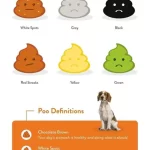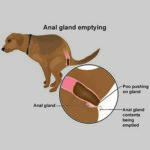Are Slow Feeders Good For Dogs
Are Slow Feeders Good for Dogs?
As a dog owner, it’s important to ensure that your furry friend is healthy and happy. One of the ways in which you can achieve this is by providing them with the right diet and feeding habits. In recent years, slow feeders have become increasingly popular among dog owners as they offer numerous benefits for dogs.
What are Slow Feeders?
Slow feeders are special bowls or feeding devices designed to slow down how fast dogs eat their food. These devices come in various designs, shapes, and sizes, but all work on the same principle of providing a challenge for dogs when eating. Some slow feeders have ridges, bumps, or obstacles that force dogs to work harder to get to their food.
Why Use Slow Feeders?
There are several reasons why dog owners should consider using slow feeders. Firstly, slow feeders can help prevent choking and vomiting in dogs. This is because when dogs eat too quickly, they tend to swallow large chunks of food without chewing adequately. This can lead to choking or vomiting.
Secondly, slow feeders can help improve digestion in dogs. When dogs eat slowly and chew their food properly, it allows their digestive system to work better, leading to better absorption of nutrients from their food.
Thirdly, slow feeders can help prevent obesity in dogs. When dogs eat too quickly, they tend to overeat as they don’t have time to feel full before finishing their meal. Using a slow feeder helps regulate the amount of food your dog eats and prevents overeating.
Fourthly, slow feeders are an excellent way to keep your dog mentally stimulated and engaged during mealtime. By making it more challenging for your dog to access their food, you’re providing them with mental stimulation that keeps them occupied and entertained.
Lastly, using a slow feeder can be an excellent way to bond with your dog. By watching them work through the obstacle course of their feeder, you get to see their determination and problem-solving skills in action.
Types of Slow Feeders
There are several types of slow feeders available in the market today. Some of the popular ones include:
1. Puzzle feeders – These are slow feeders that require dogs to solve a puzzle or complete a challenge before accessing their food.
2. Lick mats – These are flat mats with various textures that allow dogs to lick their food off them slowly.
3. Maze feeders – These are bowls with maze-like designs that force dogs to work harder to access their food.
4. Slow feed bowls – These are regular dog bowls with ridges or obstacles that slow down how fast dogs eat their food.
5. Interactive toys – These are toys that dispense food slowly as dogs play with them.
Choosing the Right Slow Feeder for Your Dog
When choosing a slow feeder for your dog, there are several factors you need to consider. Firstly, you need to consider the size and breed of your dog. Large breeds may require bigger and more durable slow feeders than smaller breeds.
Secondly, you need to consider your dog’s eating habits. If your dog is an aggressive eater, you may need a slower feeder with more obstacles than one that eats slowly.
Thirdly, you need to consider the type of food your dog eats. Wet foods may not work well with some slow feeders as they tend to stick on the surfaces, making it difficult for dogs to access them.
Lastly, you need to consider the design and material of the slow feeder. Look for one that’s easy to clean and made from non-toxic materials.
Conclusion
In conclusion, slow feeders are an excellent way to promote healthy eating habits in dogs while also keeping them mentally stimulated and engaged during mealtime. By using a slow feeder, you can prevent choking and vomiting while improving digestion and preventing obesity in your furry friend. There are various types of slow feeders available in the market today, and choosing the right one for your dog depends on several factors such as size, eating habits, type of food, and design.



